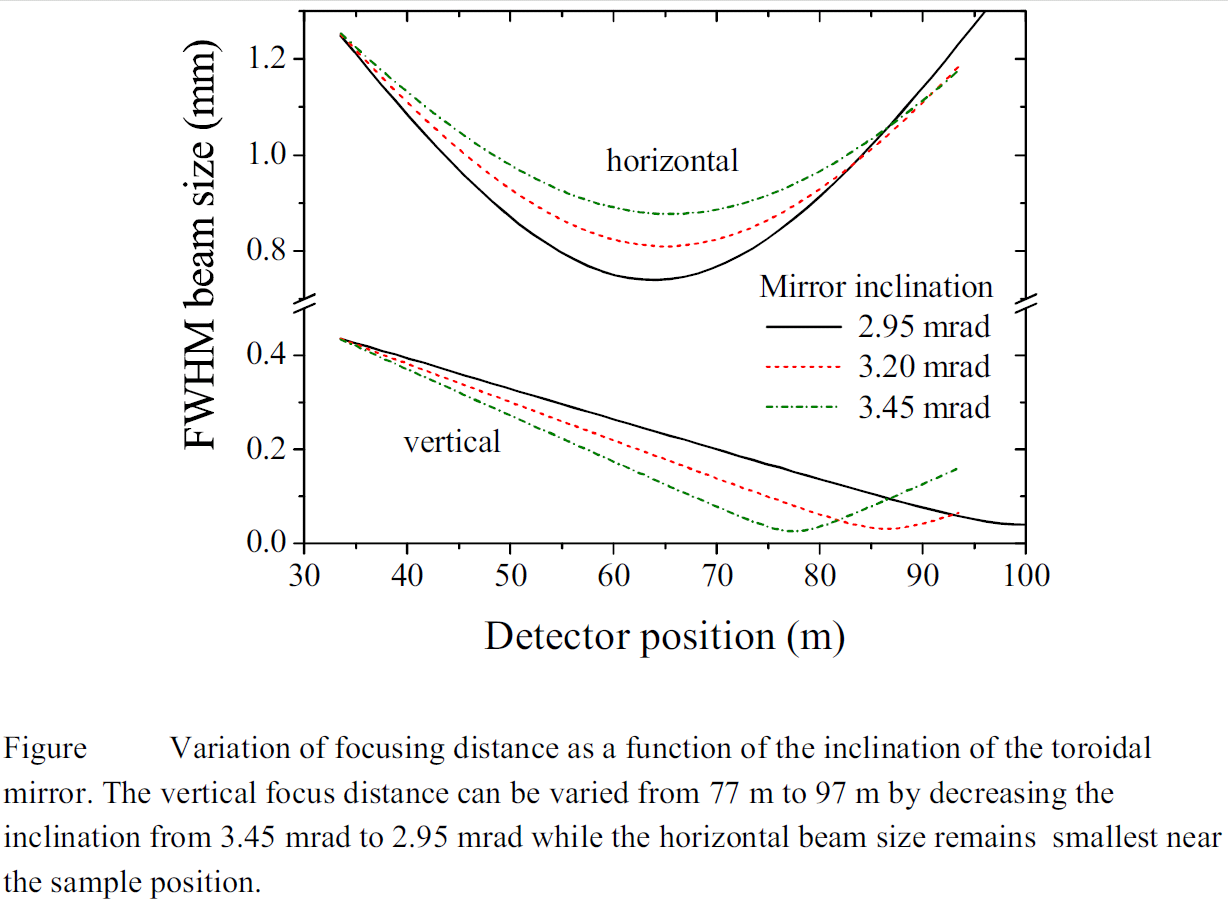ID02 Optics
Optics hutch at ID02: technical details
Monochromator
The maximum power density on the monochromator is about 20 W/mm2. A cryogenically cooled Si-111 channel-cut monochromator withstands this power load without severe broadening of the rocking curve. A closed liquid-nitrogen loop provides automatic operation of the cooling system. To reduce background radiation from the storage ring, the beam is vertically displaced by 30 mm. The Si(111) crystal can select energies between λ = 0.155 nm and λ = 0.073 nm. At λ = 0.1 nm (12.4 keV) the bandwidth is of the order of ΔE/E =2.10-4.
Mirror
An uncooled horizontally reflecting toroidal mirror follows the monochromator. The mirror has a fixed shape and can only be used with wavelengths longer than 0.073 nm. In both directions the maximum reflection angles are 12 mrad. Because of the small beam-divergence the focusing parameters can be kept fixed for all experiments. The mirror characteristics were chosen to minimise the beam size at the detector position. The following figure shows the calculated beam size along the 30 detector tube.

Beam characteristics
| optical elements: | double monochromator | toroidal (or cylindrical) mirror |
| distance from source: | 29.6 m | 34 m |
| type: | Si(111), cryogenically cooled 30 mm vert. displacement |
Rh coated |
| beam size at sample posit.: | unfocused | focused |
| (at 55 m , 12.5 keV HxV, FWHM) in mm2 : |
(real mirror) 2.6 x 1.3 |
0.4 x 0.2 (0.45 x 0.06) |
| spectral range : | 8- 17 keV (0.073 - 0.15 nm) |
| resolution in Δ E/E : | 2.0 10-4 at 12.5 keV |
Further Information
- Back to the ID02 start page
- Back to the Beamline layout (overview)
- Overview of detectors for SAXS/WAXS and USAXS
- Sample environments
- Procedures for data acquisition and online reduction
- Scientific and industrial applications
- Recent publications at ID02



